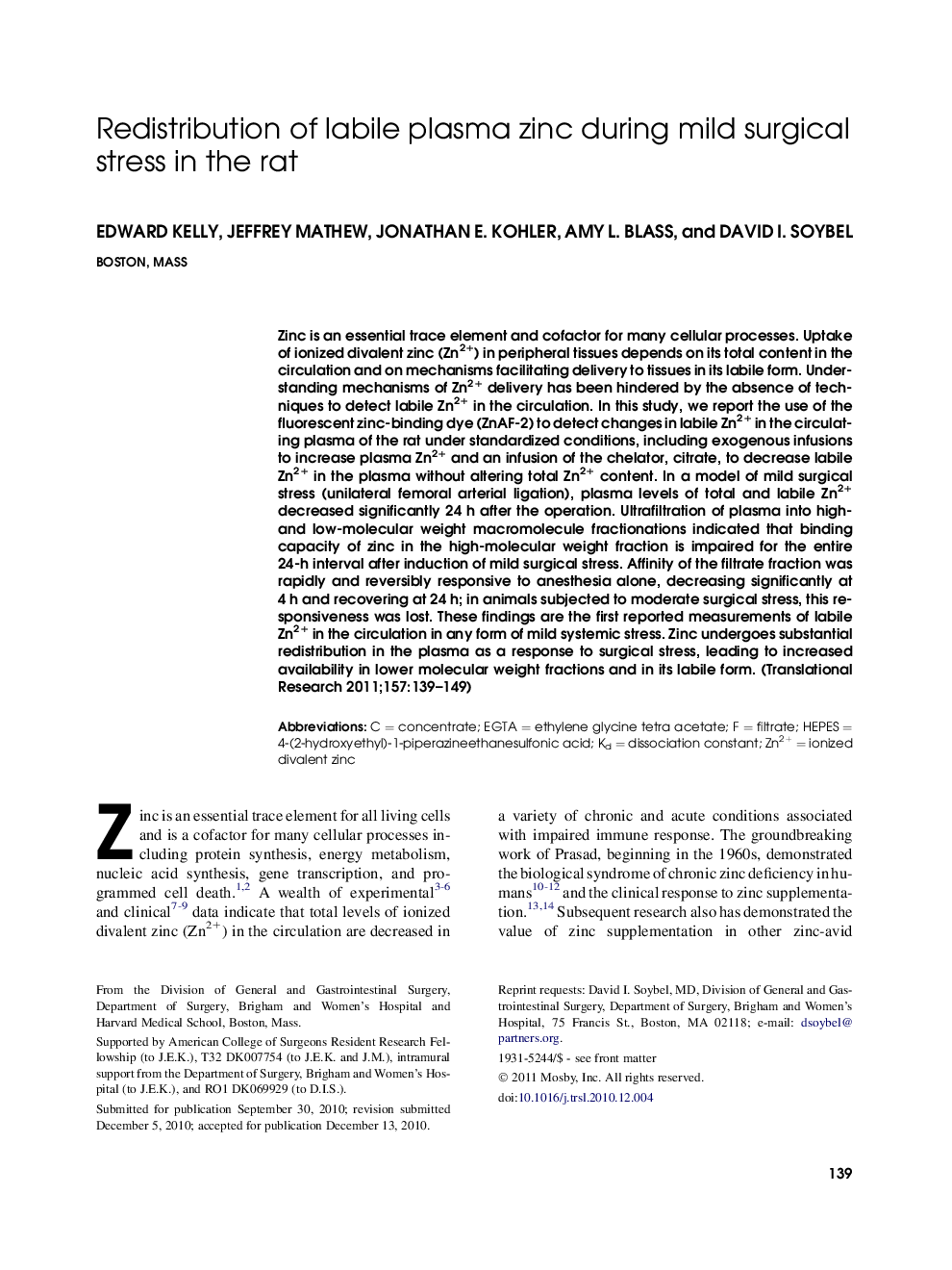| Article ID | Journal | Published Year | Pages | File Type |
|---|---|---|---|---|
| 3840739 | Translational Research | 2011 | 11 Pages |
Abstract
Zinc is an essential trace element and cofactor for many cellular processes. Uptake of ionized divalent zinc (Zn2+) in peripheral tissues depends on its total content in the circulation and on mechanisms facilitating delivery to tissues in its labile form. Understanding mechanisms of Zn2+ delivery has been hindered by the absence of techniques to detect labile Zn2+ in the circulation. In this study, we report the use of the fluorescent zinc-binding dye (ZnAF-2) to detect changes in labile Zn2+ in the circulating plasma of the rat under standardized conditions, including exogenous infusions to increase plasma Zn2+ and an infusion of the chelator, citrate, to decrease labile Zn2+ in the plasma without altering total Zn2+ content. In a model of mild surgical stress (unilateral femoral arterial ligation), plasma levels of total and labile Zn2+ decreased significantly 24 h after the operation. Ultrafiltration of plasma into high- and low-molecular weight macromolecule fractionations indicated that binding capacity of zinc in the high-molecular weight fraction is impaired for the entire 24-h interval after induction of mild surgical stress. Affinity of the filtrate fraction was rapidly and reversibly responsive to anesthesia alone, decreasing significantly at 4Â h and recovering at 24 h; in animals subjected to moderate surgical stress, this responsiveness was lost. These findings are the first reported measurements of labile Zn2+ in the circulation in any form of mild systemic stress. Zinc undergoes substantial redistribution in the plasma as a response to surgical stress, leading to increased availability in lower molecular weight fractions and in its labile form.
Keywords
Related Topics
Health Sciences
Medicine and Dentistry
Medicine and Dentistry (General)
Authors
Edward Kelly, Jeffrey Mathew, Jonathan E. Kohler, Amy L. Blass, David I. Soybel,
